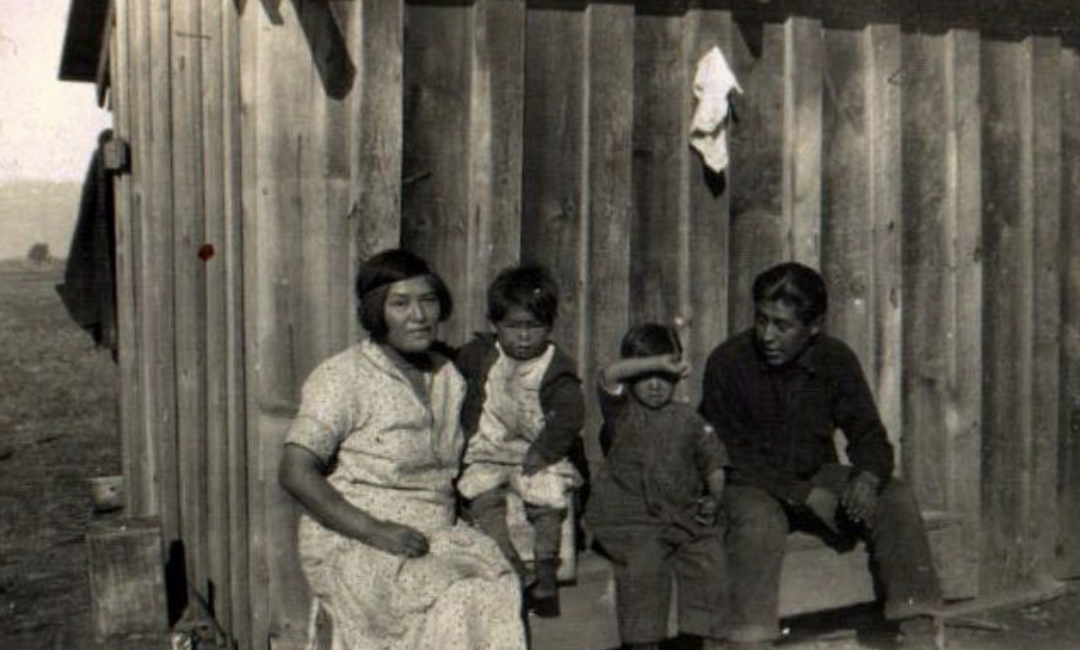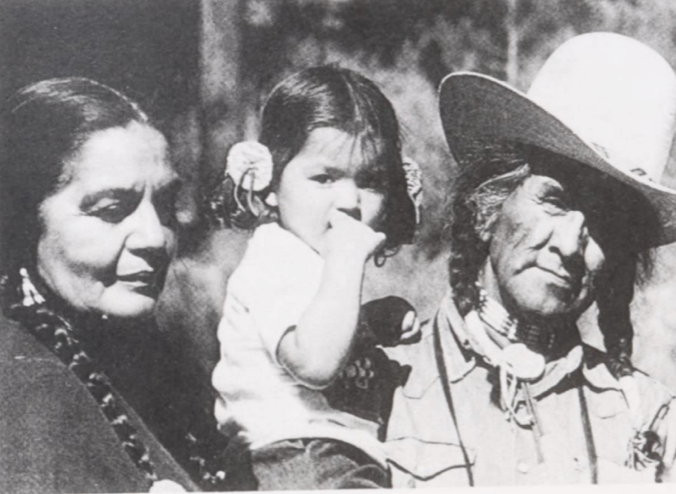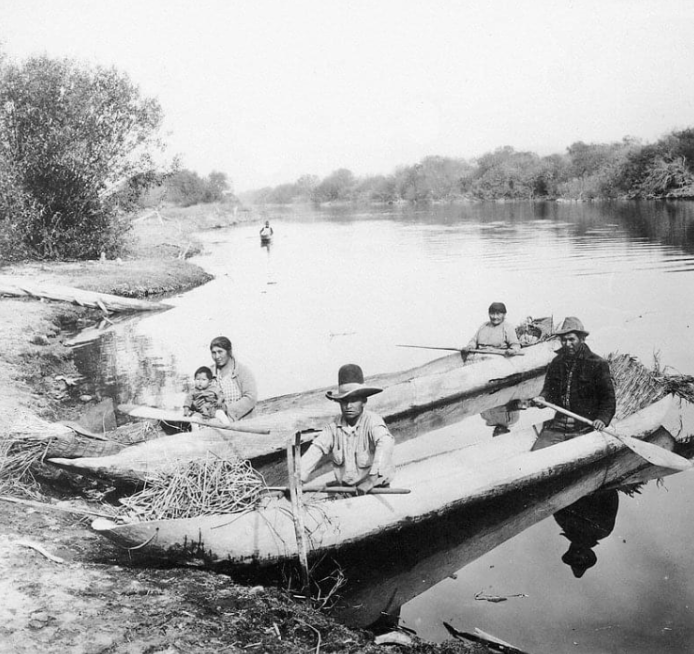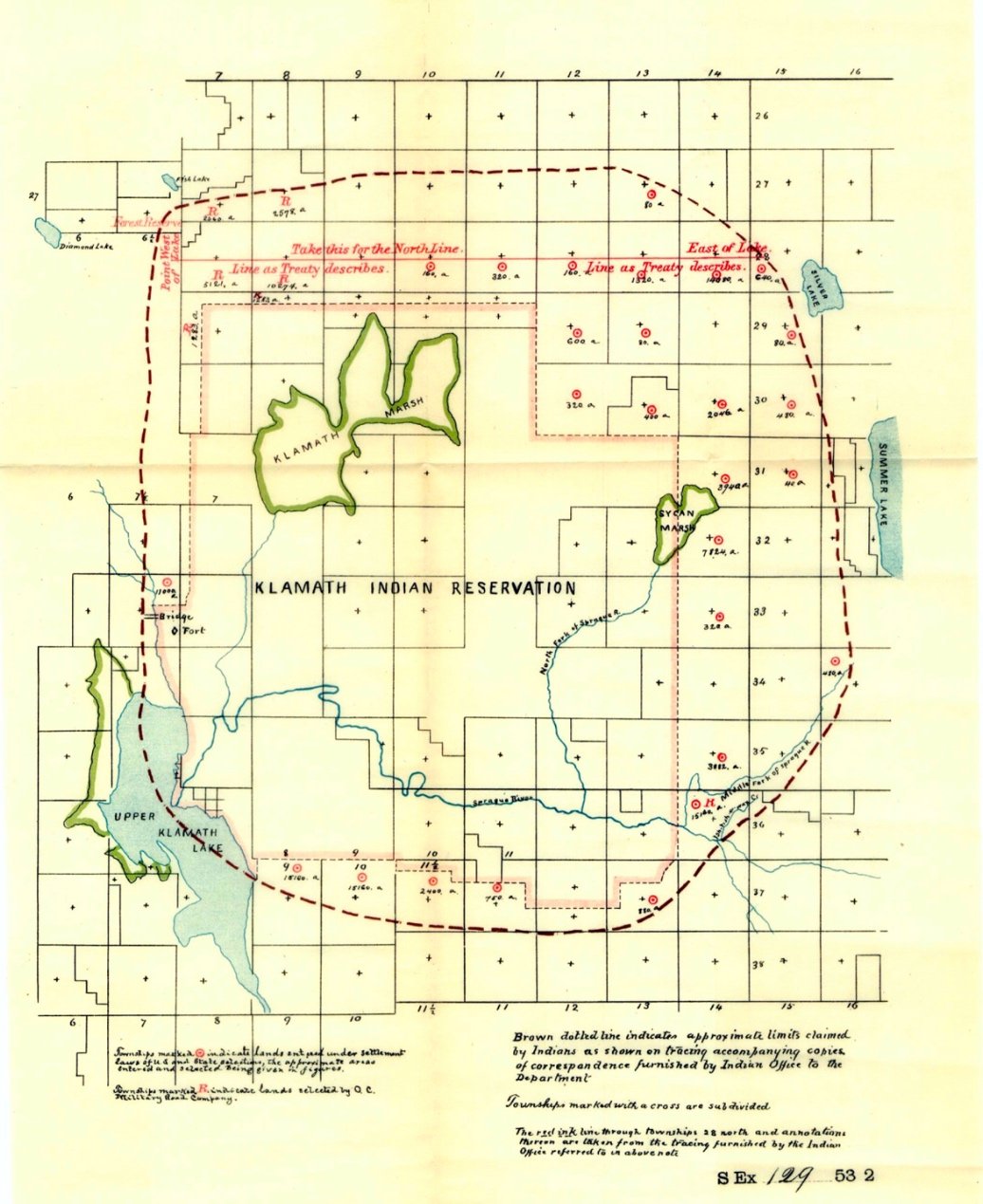shashiúka
/to learn/
shashapkeléash (story)
What are the stories of the Maklaks?
Texts written about us for us;
Texts written about us by anthropologists or others can have a dramatically different impact. Unfortunately, many of us are left to look behind us in the texts documented by governmental agents to learn some of our history and culture.
If you are a Klamath Modoc Yahooskin individual who has knowledge and stories about our people, lands, waters, or relatives, consider writing them out for the rest of our people to have access to. It feels so good to read our stories written by our own people.
Below are direct links to resources where you can learn more about our people, places, and relatives
Listen. Speak. Revive.
hoqambli: to regain consciousness, to come to life again, to breathe again
-

Tyler Barlowe's Songs
A compilation of 15 different songs by Maklaks elder, Tyler Barlowe.
-

Stories of our Maklaks
A compilation of 14 different stories from early 1930’s to 1960’s from different Maklaks elders, documented by anthropologists.
-

Ewksiknii Am Hemkanks CD
A compilation of 19 different elicitation sessions of our Maklaks elders, documented by anthropologists.
-

Klamath Language Dictionaries
Our language was primarily documented by two different Bostin’s, which had two different spelling systems:
Albert S. Gatschet publication’s of 1890
M.A.R. Barker’s publications of 1963-64
Worthwhile Ambo Reads
Klamath Bipartisan Infrastructure Projects
February 2024, an agreement between the US Department of Interior, Klamath Water Users Association, Klamath Tribes, Yurok Tribe, and Karuk Tribe. Parties have agreed to “advance collaborative efforts to restore the Klamath Basin ecosystem and improve water supply reliability for Klamath Project agriculture.”
Klamath Water War Episode
An OPB PBS 27-minute episode on the history of the tensions between Klamath Tribes, Klamath River Tribes, and farmers.
‘There Are No Winners Here’: Drought in the Klamath Basin Inflames a Decades-Old War Over Water & Fish
July 2021, an overview on drought fueling tensions between indigenous peoples, irrigators, and endemic fish species.
Killing the Klamath Episode
An OPB PBS 21-minute episode on history of the Klamath Modoc Yahooskin peoples fight to protect the dying c’waam, koptu, and Upper Klamath Lake.
Water Wars: Completely Dry Klamath Basin Pitting Farmers & Tribes Against Each Other
June 2021, an overview on drought, agricultural exploitation, discretion of Upper Klamath Basin, and Klamath Tribes fighting for existence.
Iron Gates Last Mass Salmon Kill
February 28, 2024: “Large numbers of young Chinook salmon were found dead two days after being released from a state hatchery. But biologists say river conditions were okay and they were shocked by the die-off. The suspected cause is pressure changes in a Klamath dam tunnel.”
Related Reading~ Fall-Run Chinook Salmon Fry Succumb to Gas Bubble Disease in Klamath River Read Article Here by US Fish & Wildlife
Klamath & Modoc Places by Jim Spindor
“How can you buy or sell the sky- the warmth of the land. The idea is strange to us. Yet we do not own the freshness of the air or the sparkle of the water. How can you buy them from us? We will decide in our time. Every part of this earth is sacred to my people. Every shining pine needle, every sandy shore, every moist in the dark woods, every clearing and humming insect is holy in the memory and experience of my people.”
May 1996, Jim Spindor created a “compilation, or gathering, of places (250+ sites) of significance to the Klamath and/or Modoc people, together with comments about some of these locations. It should be remembered how important the places the Native Americans lived were to them. The land and all it container were scared to these people.
Return of the Raven
Return of the Raven by Edison & Leatha Chiloquin,
“This booklet was compiled from the notes and records collected during many years of researching our tribal history and from the information handed down to us from our ancestors. We have tried to give as briefly as possible the basic information regarding our cultural heritage, along with various little known historical facts, so that the young people who are interested in learning of their culture and language will have a base from which to start. Edison has drawn the pen and ink sketches for this booklet.” -The Chiloquins’
Along Klamath Waters by Marie Norris
What Freedom Used To Be To The Indian by Cheryl Hatcher Cole
“Indian children running and jumping, playing and screaming never having a fear of the days.
For an Indian to see this, he sees freedom.
The coyote howls to the full moon in the night.
For an Indian to hear this, he hears freedom.
He picks up the soil of the Earth in his hand, soil that has never been used.
To the Indian feeling this soil he feels freedom.
As an Indian I too will speak of what freedom used to be to the Indian.
An Indian was free to roam for miles and miles across lands there would be no barbed wire fences to stop him I speak of freedom in this manner because we once were a free people.”
Along Klamath Waters by Marie Norris was edited and released in 1979, with the support of Roger Weaver. Ms. Norris shared her stories about our struggles with termination, a riches of humor, food, beliefs, customs, words and insights passed down to her. “Marie Norris is speaking to her own here.”
Klamath Ethnography by
Leslie Spier
1930, a study published by Leslie Spier, “based on information gathered among the Klamath for the University of California during two visits, each for a month, in 1925 and 1926… The Klamath still live in their old home in Southern Oregon, but their ancient culture exists only in their memories, save as the older people keep up domestic pursuits. Yet even middle-aged people have very good knowledge of it. My elderly informants had all participated in the old life in their youth. These were Nancy Phillips, Pat Kane, and Coley Ball, all three about seventy, and Thomas Lang, bout fifty-five. With the exception of Mrs. Phillips they gave information in English: in her case (the most valuable material) Mr.Lang and his son Delford acted as interpreters.”
Contents of the texts include sections about Klamath social life, klamath shamanism, economic life and material culture, and the klamath and western culture.
The History of the Klamath Indian Reservation 1864-1900
June 1947, Otis H. Johnson’s thesis at the University of Oregon, “The author has sought to accomplish these motives in recording the history of the Klamath Indian Reservation, an area compromising over one million, two hundred and fifty thousand acres of land, timber, and other natural assets, located in southeastern Oregon, just east of the Cascade mountains.”
Chapters in Johnson’s thesis include; (1) Ethnology of the Snake Indians, (2) Early Unrest in Oregon, (3) The Legal Beginning of the Reservation, (4) From the Fire Tower, (5) The Coming of Lindsay Applegate, (6) The Act of 1864, July 2, (7) O.C. Knapp, Army Officer, (8) The Boundary, (9) The Modocs and the Military, (10) Business Administration, (11) At the Head of Sprague River Valley, (12) Congress Begins to Realize its Problem, (13) Growth in 1881, and (14) A Final Analysis.
The Initial Shot by Ivan D. Applegate, “Perhaps a few places on earth, of like area; have cost so much in blood and treasure as Klamaths Land, and yet it may be worth the price, dear as it was, for it is one of nature's brightest gems. The native possessor held it with a tenacity which compels us to admire his patriotism, his reverence for the land of his ancestors, while we depreciate the methods of his warfare. As he put it: “Here is the dust of my fathers. Better for me to die here than to be removed to any other country. If I die here I go down to the dust with my father and my people. If I die in some other land, I shall be lost forever”.
Myth and Subsistence Stress Among the Klamath and Modoc
by Elizabeth Sobel
February 1996, In this draft analysis exploring how “oral tradition can counter subsistence stress by transmitting survival information across time and space. “
Elizabeth Sobel’s begins with, “I analyze Klamath and Modoc myth texts for their relevance to subsistence stress, posing the following questions: Does Klamath and Modoc myth encode information which decreases the use of subsistence stress? If so, what are the encoded survival strategies and what type of shortages do they counter? How does myth effectively transmit encoded survival strategies? And, how useful is myth for understanding past cultural strategies for reducing subsistence risk, among the Klamath and Modoc, and more generally?
I begin this inquiry with a review of ethnographic, historic, and biological information regarding subsistence stress among the Klamath and Modoc. I then turn to myth content and discuss encoded risk-reducing behaviors, as indicated by my content analysis of Klamath and Modoc myth texts. Next I consider how the traditional narrative context of Klamath and Modoc myth facilitated the transmission of encoded survival strategies. I conclude with a discussion of the result in terms of their value for understanding subsistence stress among the Klamath and Modoc, and for understanding past risk-reduction behaviors more generally.”
The Legacy of Ancient Lake Modoc: A Historical Geography of The Klamath Lakes Basin Oregon and California
by Samuel N. Dicken and Emily F. Dicken
A book distributed by University of Oregon and Shaw Stationery Co. in 1985, centering a timeline of impact on our waters and lands from settlement in the Upper Klamath Basin. The chapters of this book include (1) Explorations and Early Perceptions: 1826-1860, (2) Early Settlement: 1860-1900, (3) A New Era for the Basin: 1900-1930, (4) Drought, Depression and Recovery: 1930-1950, (5) The Modern Period: 1950-1985, (6) Klamath Falls and Altamont: 1985.
Modoc Myths by Jeremiah Curtin, 1884
Curtin documented 50+ Modoc Myths, which are all teachings of our beliefs, religions, and ways of life prior to contact with settlers.
Some of Our Klamath and Modoc Stories:
The link below has a compilation of the following Klamath and/or Modoc stories
Wus and the three moons of winter
Habits of Modoc Women
Fox (Coyote) and the Clouds
Coyote and the Clouds
Limalimaas (Thunder) is killed by the little boy Nulwi
Kumush Tsmuks (Darkness) Kai makes ten winter moons out of five
Swin-win or Gwin-win
Doctor Black (Medicine) Crow- Kak, Gak pretends to be dying, kills deer, meets Wus, kills Yamal and then goes with Wus to the mountains
Mice (Two old mice sisters)
Tcackai and the old man with the ground hogs
Lulusdewieas who went under the ground from the Lava Beds to Mt. Shasta and Old man who turned into a screw
Weasel and the old man with the ground hogs
The five blaywas brothers or The man with the blue leg
Swaia runs a Race
Skunk and the sister of Blaywas
Tcutuk and Get Kes: Snow escaped from the bag
Kawaduilala and her two grandsons who appear in Kiuks in dreams
Additional Older Reports about our Maklaks
-

Samuel A. Clarke Papers
A research paper booklet released by the Klamath County Museum in 1960, included passages from Samuel A. Clarkes scrapbook, (1) The Land of the Modocs, (2) Early Klamath History, (3) Indian Manners and Customs, (4) Scenes on the Reservation, (5) Yainx, Type Blowe of Klamath on Doctors.
-

The Material Culture of the Klamath Lake and Modoc Indians of Northeastern California and Southern Oregon
A report released 1910 by SA Barrett, from a University of California Ethnological and Archaeological Survey, the information shared is from a study completed in the summer of 1907. Barrett’s survey includes sections on Klamath and Modoc territory, environment, buildings, implements of war, hunting implements, fishing implements, stone implements, games, basketry, and fire-making.
-

Wokas, A Primitive Food of the Klamath Indians
A report published in the National Museum during 1902 by Frederick Vernon Coville, centering Wokas, a very significant first foods of the Klamath People.
-

The U.S. National Herbarium, Notes on the Plants Used by The Klamath Indians of Oregon
A 1897 U.S. Department of Agriculture report by Frederick V. Coville, providing information for a variety of traditional medicines, foods, plants.
Klamath Basin History
History of the Klamath Tribes, Karuk Tribe, Hoopa Valley Tribe, and Yurok Tribe within the Klamath Basin
The Story of Lao and Skell (Ewksiknii Legend)
Klamath legend of the creation of Wizard Island in Crater Lake
Cwaam Ceremony History by Klamath Tribes Language Department
Reciprocal relationship between Maklaks and Cwaam Kotpu


































